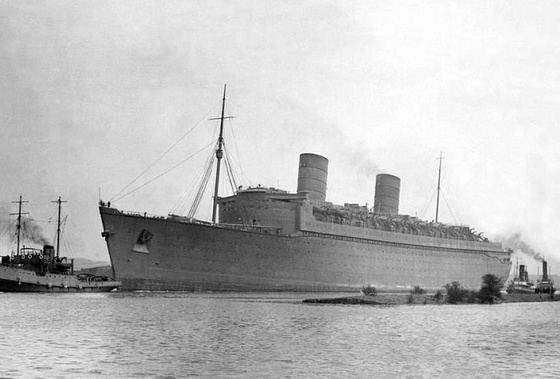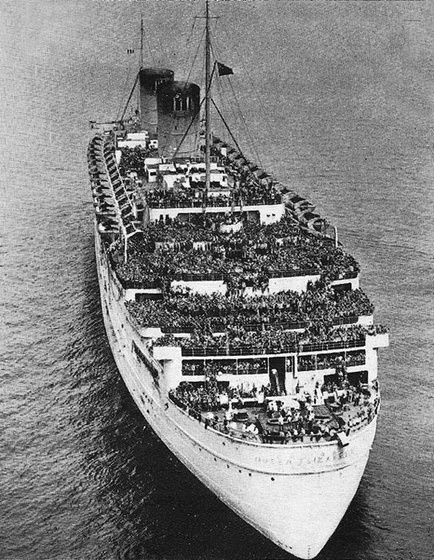Archive of the Mendocino Heritage Artists
The RMS Queen Elizabeth (1942)

Excerpts from “The Magnificent Queens“ by Alan Chanter: …With the entry of Japan into the war*, they began their long service as troop transports for American troops. The initial successes of the Japanese with their swift progress towards Singapore menaced the whole of the Far East and seriously imperiled the Australian continent which had so largely denuded itself of armed forces to serve the Allied cause in the western hemisphere. At the moment of crisis both ships were in North American waters, undergoing one of their periods of overhaul. Three days after the fall of Singapore, the Queen Mary steamed from Boston, Massachusetts, United States for Sydney with 8,200 U.S. troops. Three weeks later [mid-March 1942], also carrying 8,000 American soldiers, the Queen Elizabeth began a 7,700-mile voyage from San Francisco, California, United States to the same destination.

After disembarking their passengers in Australia, the ships were ordered to return to New York to assist in the transportation of American forces to Great Britain. It was the first time since 1940 that the ships had returned to home-waters, and on their arrival welcome arrangements were made for the crewmen to take a well-earned, if somewhat brief, leave with their families. …Between the Spring of 1940 and May 1945, the Queen Mary and the Queen Elizabeth phantom-like in their grey war paint had steamed over 930,000 miles – the equivalent to 38 journeys around the world – to bring safely over the oceans some 1,250,000 fighting men of the United [States]. Britain rendered no charge on the United States for these shipping services which was a mighty contribution to Lend-Lease in reverse.
*Japan had been fighting wars of conquest in the Far East since 1931. In addition, on September 27, 1940 Japan entered into a mutual defense pact with the Axis powers, Germany and Italy. Although the United States had been supplying Britain, the Soviet Union, and China through an informal Lend-Lease program, the U.S. maintained formal neutrality during 1940-41. The Japanese attack on Pearl Harbor (December 7, 1941) had the result of bringing the U.S. into the war in Europe, as well as in Asia. The RMS Elizabeth began carrying US troops after Pearl Harbor.
More about the RMS Elizabeth
Return to Dorr Bothwell’s WWII Illustrated Diary